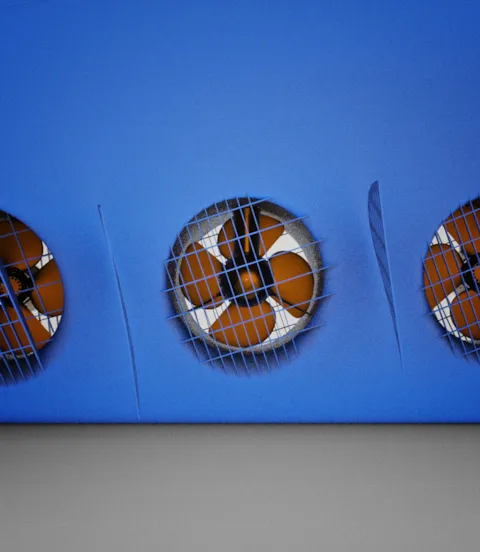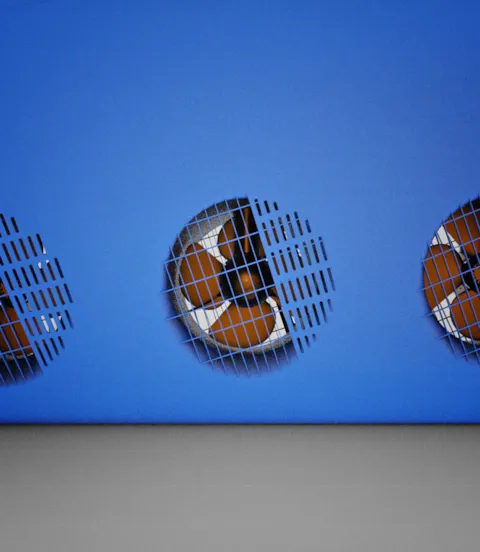Suppressing thruster tunnel drag to save energy and costs
Shipbuilding and hydrodynamics experts at Fincantieri and DNV have collaborated closely on a solution to address drag induced by bow thruster tunnels. It can help minimize ship hull resistance and reduce fuel consumption and carbon emissions.
When designing new cruise ships, the engineers at Fincantieri scrutinize every detail to maximize fuel efficiency while keeping the newbuild costs within reasonable proportions and ensuring passenger comfort. With the IMO decarbonization targets moving closer, cruise ship operators will face sharply rising fuel costs when the use of more expensive zero-carbon fuels becomes inevitable. Furthermore, carbon cap-and-trade schemes will cause additional costs. Therefore, even seemingly small hull design details such as the thruster tunnels in the bow section have come under scrutiny.
Restoring the optimized hull form around thruster tunnels
Thrusters are mainly used for crabbing, i.e. moving the ship sideways in port, and occasionally for realigning the vessel’s heading in specific navigational situations. For much of a typical voyage, however, the thrusters remain passive.
“Cruise ships have up to five bow thrusters,” explains Antonio Caizzi, Design Engineer at Fincantieri S.p.A. “The assumption has always been that the discontinuity in the hull shape around the thruster tunnels, especially the rounded tunnel edges, causes local turbulence that increases the resistance of the hull in water and should be minimized by restoring the original geometry as much as possible.”
Joint study with DNV to evaluate solutions with advanced CFD analysis
Having developed several concepts to minimize this drag, Fincantieri needed neutral verification of their assumptions and evaluation of the proposed solutions. They asked DNV to investigate the phenomenon using its expertise in advanced computational fluid dynamics (CFD) and agreed to fund an extensive joint study programme to see whether the efficiency of a ship could be improved in this area.
“Fifteen years ago, the prospect of saving one or two per cent of fuel costs wouldn’t have attracted much interest, but the situation has changed significantly,” says Dr Cosmin Ciortan, Principal Specialist and CFD expert at DNV. “What’s more, the industry is increasingly concerned about the cost of emissions, as well: thinking of carbon trading schemes, every per cent of fuel costs saved can really amount to, say, two per cent of cost savings if you include carbon costs. These amounts are no longer negligible.”

Traditional grid designs and shutters are not a satisfactory solution
DNV conducted extensive studies to understand the hydrodynamic effects involved and to what extent Fincantieri’s proposed solutions would remedy the issue. “There hasn’t been any method to model the actual turbulence and study the extent to which the thruster tunnels affect hydrodynamics,” says DNV’s Cosmin Ciortan. Thruster tunnels are often covered by a simple metal grid that conforms to the hull lines. “The purpose of this grid is to keep foreign objects from entering the tunnel while restoring the hull shape as much as possible without interfering with the flow when the thruster is activated,” says Antonio Caizzi. However, this conventional grid design was never backed up by extensive studies, he adds, and towing tank measurements are unable to produce reliable results due to scale effects.
Installing shutters that close the tunnel openings completely when the thrusters are not in use will add weight, technical complexity and cost. “This has been installed on several naval ships, but the opening mechanism would require consistent arrangement spaces,” Caizzi points out. “Shutter structural elements might also become a source of hydrodynamic disturbance for the thruster, leading to increased noise and vibrations, which we definitely want to avoid on a cruise ship .” But Fincantieri already had an alternative solution in mind.

CFD investigation into thruster tunnel turbulences
Ciortan performed his CFD turbulence analyses on a virtual hull model provided by Fincantieri, which served as a reference hull for the entire project. Step by step the investigations revealed where the impact on resistance is strongest and where the flow needs to be corrected. “We confirmed that in the conventional thruster tunnel configuration, significant unwanted turbulence occurs mainly around the tunnel edges, but also inside the tunnel; all that amounts to lost energy. The traditional grid design was actually aggravating the problem.”
The study therefore focused on the forward part of the tunnel edge where the flow tends to enter. “We discovered that there was no need to design a complete closure of the thruster tunnels,” says Caizzi. “Instead, it would be sufficient to cover the forward one-third only.”

A hydrodynamically effective, cost-saving solution is now available
Fincantieri’s patent-pending solution consists of a specially designed grid and a hinged, slotted deflector covering the forward portion of the tunnel. The bars of the grid are extended in the axial direction of the tunnel and the deflector can be swung open when the thruster is activated. This configuration creates an array of chambers of still water that acts as a shield keeping the flow outside the tunnel and guiding it towards its aft edge. “The benefit of this approach is huge. It greatly reduces the added turbulence downstream of the tunnels while requiring very little extra steel,” says Caizzi. “This new solution allows us to keep the geometry of the tunnel perfectly clear for an ideal thruster flow pattern, creating the best conditions to reduce noise and vibration on board. Passenger comfort is the driver in the cruise market!”
Owners will also appreciate the simplicity of this design, Caizzi adds. “It means lower risk, less maintenance and less weight on board while gaining the same result as closing the whole tunnel with a solid cover.” Fincantieri’s solution is now available to owners as an option for newbuilds or as a retrofit.

CFD: from scepticism to trust – a journey towards precision in hydrodynamics
The means to conduct such a detailed, extensive study have not been around for very long, both experts point out. In its early days, when CFD was not yet a well-established method, the industry looked at its results with scepticism. It has taken years to refine the methods and not only deliver high-resolution hydrodynamic data, but also earn the trust of the industry, says DNV’s Cosmin Ciortan. “As we improve our understanding of hydrodynamic effects, margins of error in measurements are decreasing and we generally have a better understanding of all the physical effects on fuel consumption.”
The commercial codes DNV uses today are very robust, Ciortan emphasizes. “All the numerical methods have been developed based on experience and are really powerful. And of course, it’s important to input quality data to receive quality data.” Caizzi adds: “To use these incredibly powerful mathematical tools you need some really professional people. It’s a science and that’s why we appreciate the vigorous support we’ve received from DNV with this project!”

Dr Cosmin Ciortan
Senior Specialist and CFD expert
- Fincantieri
